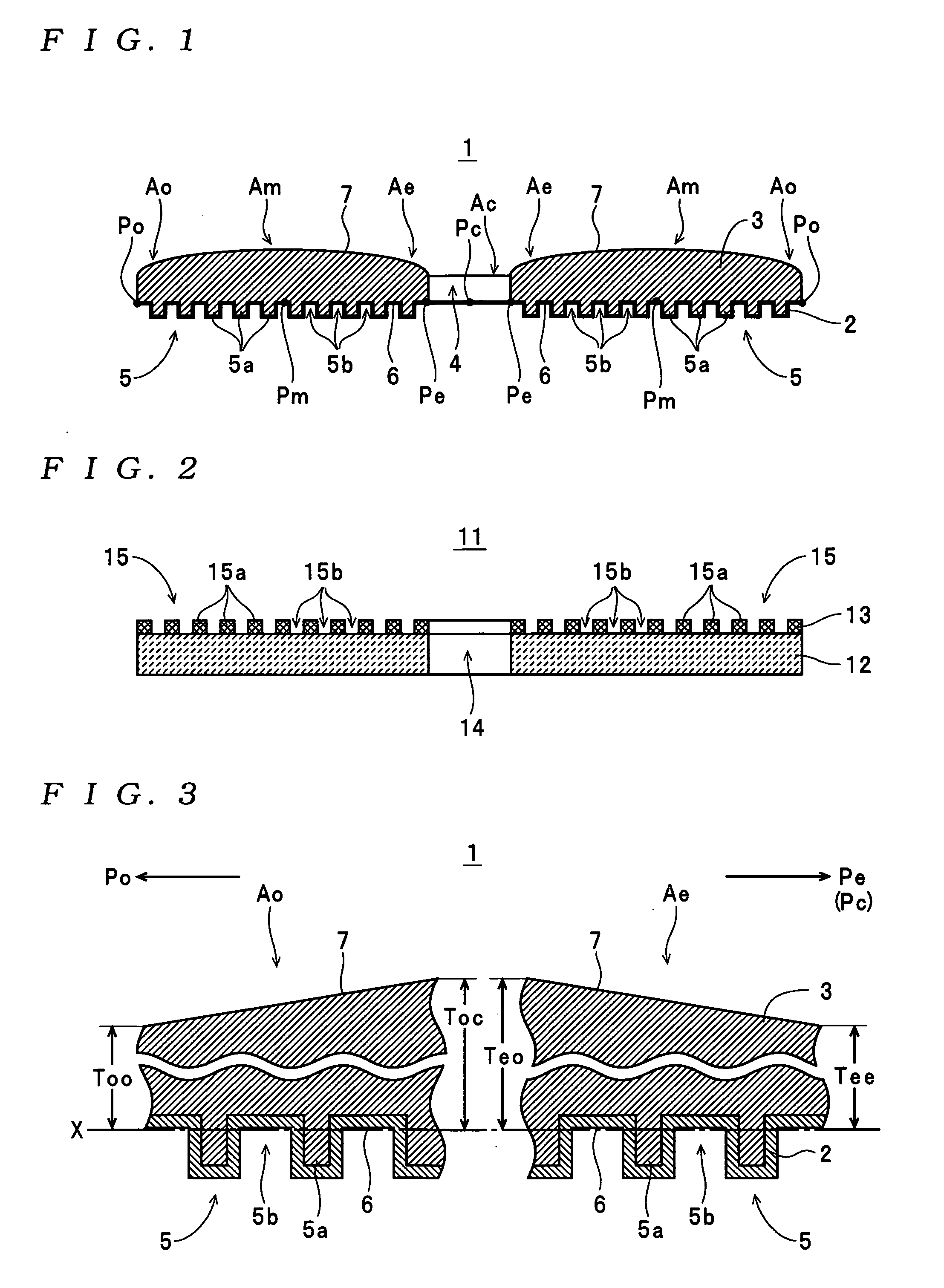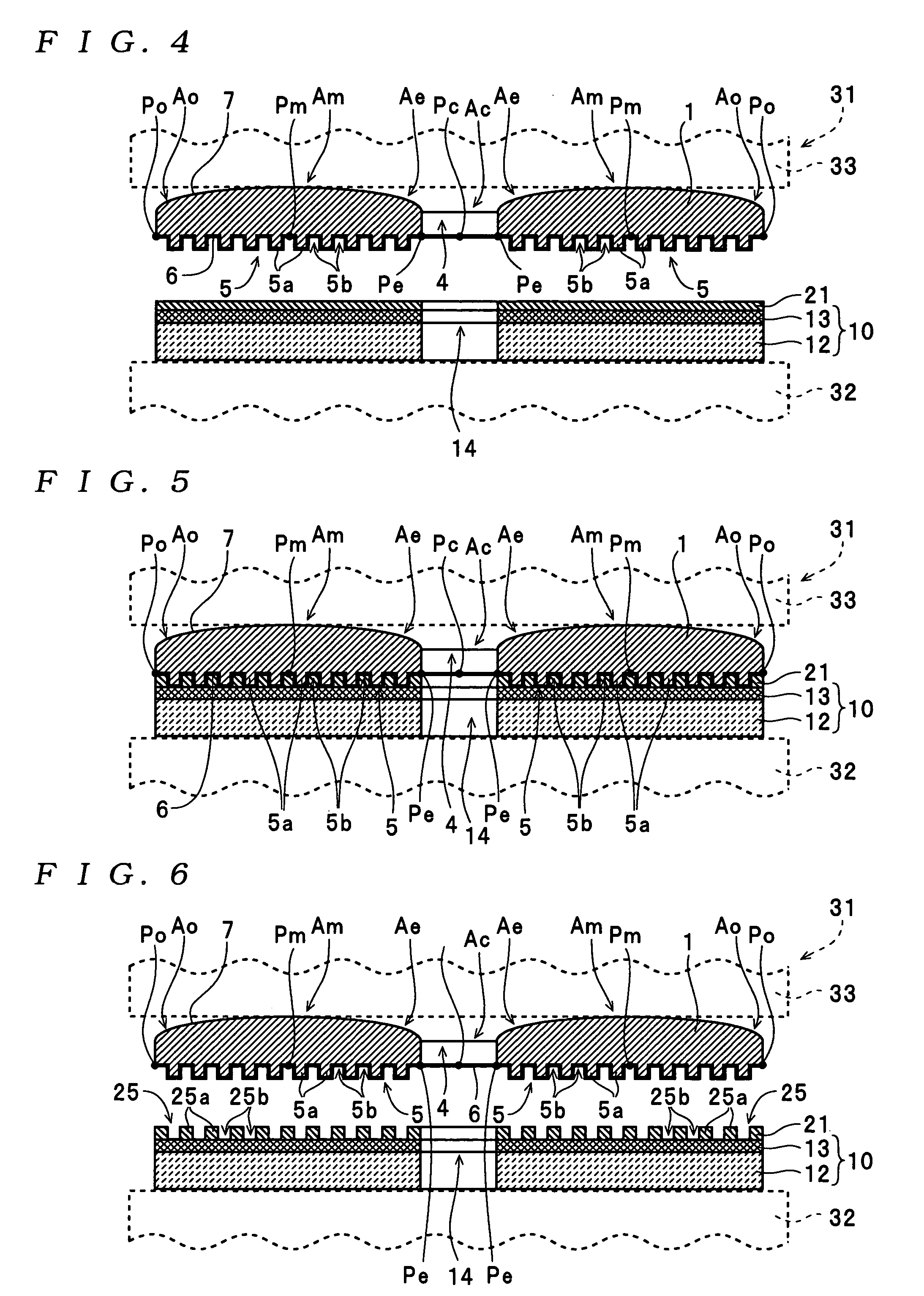Stamper, method of forming a concave/convex pattern, and method of manufacturing an information recording medium
a technology of concave/convex pattern and manufacturing method, which is applied in the direction of photomechanical equipment, instruments, originals for photomechanical treatment, etc., can solve the problems of concave/convex pattern transfer risk, concave/convex pattern transfer defect risk, and high pressure applied to the resin layer, so as to avoid deformation and transfer defect risk, the effect of excessive pressur
- Summary
- Abstract
- Description
- Claims
- Application Information
AI Technical Summary
Benefits of technology
Problems solved by technology
Method used
Image
Examples
Embodiment Construction
[0052]Preferred embodiments of a stamper, a method of forming a concave / convex pattern, and a method of manufacturing an information recording medium according to the present invention will now be described with reference to the attached drawings.
[0053]The construction of a stamper 1 that is one example of a stamper according to the present invention will now be described with reference to the drawings.
[0054]The stamper 1 shown in FIG. 1 is a matrix for manufacturing a magnetic disk 11 (one example of an “information recording medium” for the present invention) shown in FIG. 2 in accordance with a method of manufacturing an information recording medium according to the present invention, and is formed in an overall circular plate-like shape. Here, the magnetic disk 11 is a discrete track-type magnetic recording medium (a “patterned medium”) on which data can be recorded by perpendicular recording, for example. As shown in FIG. 2, a recording layer (a magnetic recording layer) 13 is ...
PUM
| Property | Measurement | Unit |
|---|---|---|
| thickness | aaaaa | aaaaa |
| thickness | aaaaa | aaaaa |
| size | aaaaa | aaaaa |
Abstract
Description
Claims
Application Information
 Login to View More
Login to View More - R&D
- Intellectual Property
- Life Sciences
- Materials
- Tech Scout
- Unparalleled Data Quality
- Higher Quality Content
- 60% Fewer Hallucinations
Browse by: Latest US Patents, China's latest patents, Technical Efficacy Thesaurus, Application Domain, Technology Topic, Popular Technical Reports.
© 2025 PatSnap. All rights reserved.Legal|Privacy policy|Modern Slavery Act Transparency Statement|Sitemap|About US| Contact US: help@patsnap.com



